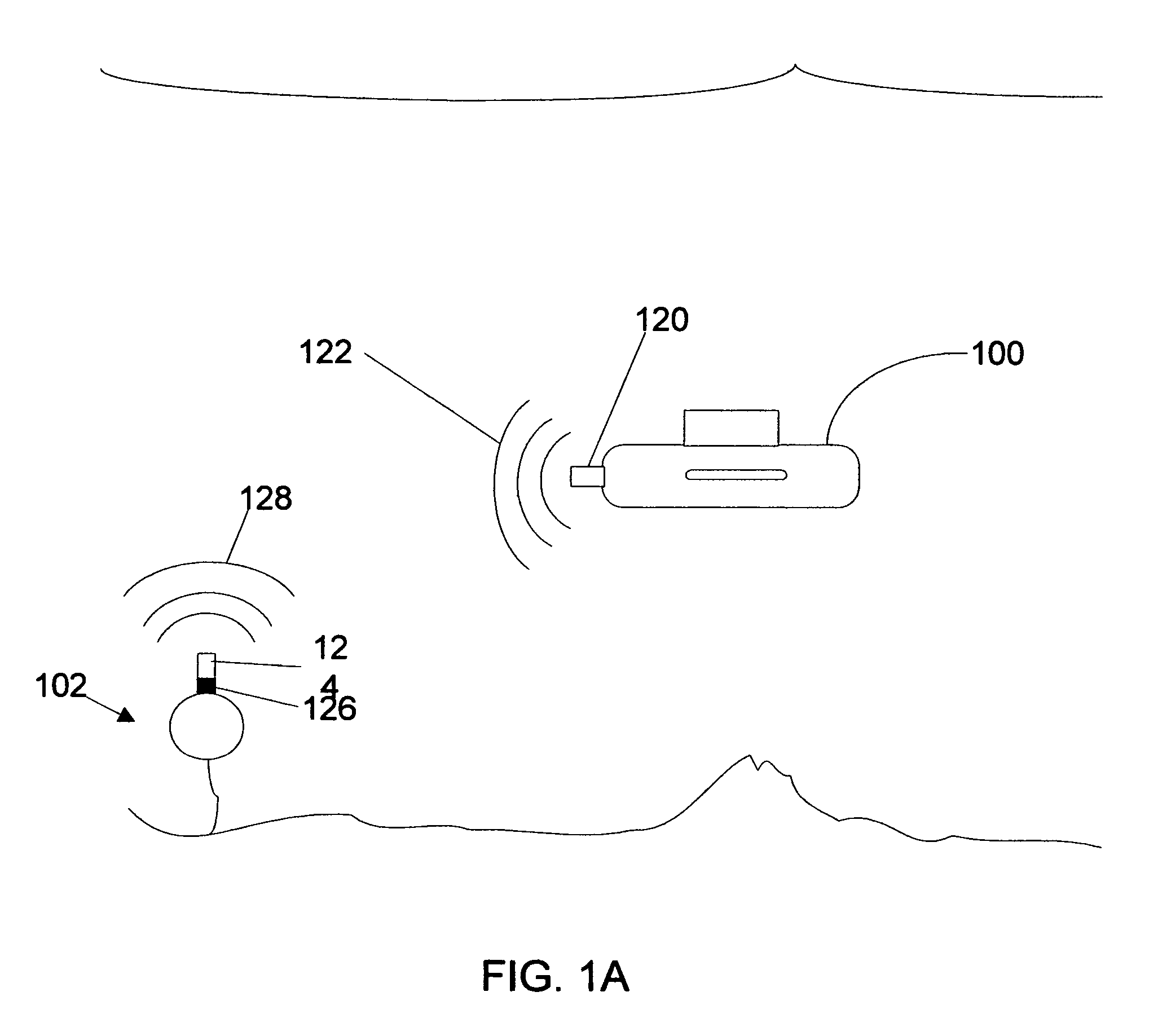Underwater geopositioning methods and apparatus
a geopositioning method and underwater technology, applied in direction/deviation determination systems, instruments, using reradiation, etc., can solve the problems of increasing the need for navigational assistance beneath the water, affecting the operation of the underwater vehicle, and reducing the availability of visible references
- Summary
- Abstract
- Description
- Claims
- Application Information
AI Technical Summary
Benefits of technology
Problems solved by technology
Method used
Image
Examples
Embodiment Construction
[0028]The invention includes a broadband underwater acoustic modem system which is capable of determining the geophysical position of an autonomous unit while providing a mechanism for transferring data through broadband acoustic signals between base and mobile systems. FIG. 1 illustrates the elements of an embodiment of the invention in an underwater environment. A submersible 100 includes an underwater acoustic modem system with transducer 120 that is used to transmit a request signal 122. A fixed base system 102 receives signal 122 at a multi-transceiver array 126 from which the bearing of signal 122 is determined. The depth, geophysical position of the fixed base system 102 is known and, together with a bearing calculation of the original request signal, is transmitted within a broadband reply signal through a transducer 124 to submersible 100. A timing mechanism (not shown) is employed to measure the time of travel of one or more signals between the systems. This can be accompl...
PUM
 Login to View More
Login to View More Abstract
Description
Claims
Application Information
 Login to View More
Login to View More - R&D
- Intellectual Property
- Life Sciences
- Materials
- Tech Scout
- Unparalleled Data Quality
- Higher Quality Content
- 60% Fewer Hallucinations
Browse by: Latest US Patents, China's latest patents, Technical Efficacy Thesaurus, Application Domain, Technology Topic, Popular Technical Reports.
© 2025 PatSnap. All rights reserved.Legal|Privacy policy|Modern Slavery Act Transparency Statement|Sitemap|About US| Contact US: help@patsnap.com



